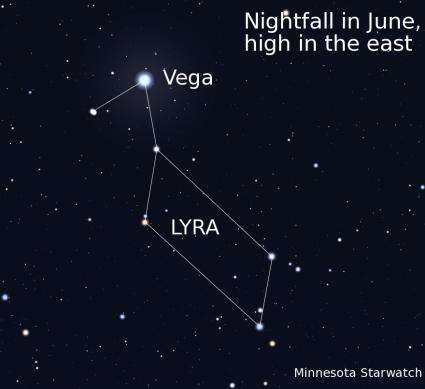Out There: Rudolph, the red-tape reindeer
| Attachment | Size |
|---|---|
| Reindeer_FinalCut_013013.mp3 | 11.88 MB |
If a reintroduction effort in the 1990s hadn’t been scuttled, northern Minnesota would now be home to many sleighs’ worth of reindeer.
So says Dr. John Pastor, professor of biology at the University of Minnesota Duluth. “This would have been a model study on how to reintroduce a native species to an area where it had been extirpated.“
In the 1990s, Pastor was part of a committee pursuing the possibility of returning caribou—also called reindeer—to the state. The committee comprised a grab bag of government agencies and one nongovernmental organization.
After 18 months of research, the committee had a plan.
Tastes like regional extinction
Let’s back up for a minute. Where did all of our caribou go?
It’s the too-familiar conservation story of not knowing what you’ve got till it’s gone. Woodland caribou once abounded in the bogs and boreal forests of northern Minnesota.
Then, in the 1800s, likely due to a combination of overhunting, habitat loss, and Parelaphostrongylus tenuis (brainworm) spread by white-tailed deer, the caribou population nosedived.
“The last native herd, near Isabella, was actually shot to provide meat for a logging camp,” said Pastor.
Since the 1930s, there have been only sporadic caribou sightings, the most recent confirmed of which was in 1981. The closest most Minnesotans have ever come to a caribou is a coffee shop.
Woodland caribou (Rangifer tarandus caribou) are cervids, smaller than moose but bigger than whitetails. Various subspecies of caribou inhabit the world’s northerly regions.
Adults can weigh 600 lbs and stand five feet at the shoulder. Their distinctive antlers swoop skyward like giant, velvet apostrophes.
These hooves are made for walkin’
Caribou are known for their wanderlust. Many caribou herds migrate from winter to summer feeding grounds, sometimes traveling hundreds of miles.
Scientists’ misunderstanding of caribou migration actually doomed an earlier attempt at reintroducing them—caribou, not scientists—in Minnesota.
In the 1970s, the DNR studied the possibility and found that the northeastern corner of the state had the right habitat.
Unfortunately, people at the time labored under the misapprehension that caribou caught as adults and released elsewhere would always migrate “home.” (This theory has since been proven false.) So it was thought that, to establish a new native herd, the DNR would first need to rear caribou from infancy at the reintroduction site.
Lacking the funds to launch a caribou nursery, the DNR abandoned the effort.
Enter the Duluth Safari Club. In 1988, the Duluth Safari Club—a group of big-game enthusiasts—proposed another reintroduction effort.
The Safari Club enlisted partners, provided a substantial amount of funding, disbanded, and re-formed as the North Central Caribou Corporation, or NCCC.
While the NCCC’s board of directors was staffed largely by representatives of government agencies, the project included input from the Izaak Walton League, the Sportsman’s League, Friends of the Boundary Waters, and the University of Minnesota. The DNR and the Forest Service played substantial roles.
“The big question was, ‘Could we successfully reintroduce caribou?’” said Pastor.
Ask the neighbours
To find the answer, the group began an extensive scoping study. Research was carried out by the Forest Service, the University of Minnesota, and the Natural Resources Research Institute.
Researchers examined possible reintroduction sites for topography and deer and wolf concentration. Too many predators or whitetail-carried brainworm could wipe out a nascent caribou herd.
A 1,300-square-kilometer area near Little Saganaga Lake in the eastern sector of the Boundary Waters Canoe Area Wilderness and southeastern Quetico Provincial Park was identified as the most suitable site for reintroduction. The runner-up site was near Isabella, home of the last native herd.
The scoping study addressed other logistical questions as well—such as how to get some caribou to reintroduce.
The answer: Ask the neighbors. Er, neighbours.
Specifically, the plan called for the agency overseeing the actual reintroduction to ask the Ontario government for surplus caribou from the Slate Islands. Those caribou would be airlifted to the Little Sag site and released.
White paper, red tape
In 1998, the NCCC published a paper detailing its research, progress and plan. But when it came time to take the next steps, the DNR and Superior National Forest balked. Political pressure may have been a factor.
Whatever the explanation, the reintroduction effort stalled. Then the committee chair died unexpectedly. Then one of the staunchest reintroduction proponents retired.
Other committee members moved on. The NCCC has been defunct for years.
Pastor put it colloquially: “The DNR got cold feet… and it all fell apart.”
Dr. Peter Jordan, associate professor emeritus in the department of fisheries, wildlife and conservation biology at the University of Minnesota, was first author on the NCCC paper.
Reached by email, Jordan confirmed that no movement on reintroduction has happened in over a decade. “It’s a dead issue.”
Which Pastor thinks is too bad. “I think if we had gone through with it we would have a viable caribou herd in Minnesota right now.”
It’s hard to say for sure whether transplanted woodland caribou would take root. We will probably never know.
Sorry, Rudolph.
Airdate: February 5, 2013
Tweet






